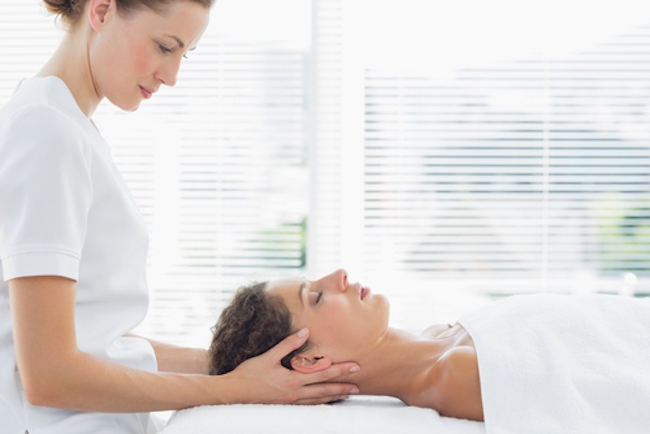
Features
Research
Clinical massage helps relieve pain, anxiety in hospital patients: study
Clinical massage and guided imagery may have a substantial, positive impact on patients' comfort at a very low cost, according to a study published in Critical Care Nurse (CCN).
February 7, 2017 By Newswise

Researchers with Beaumont Health System in Royal Oak, Michigan, found that patients’ self-reported pain and anxiety scores improved immediately after a clinical massage, while other patients who listened to a guided-imagery recording found the intervention to be very helpful, reporting improvements in pain, anxiety and insomnia.
“Beneficial Effects of Guided Imagery or Clinical Massage on the Status of Patients in a Progressive Care Unit,” published in the journal’s February 2017 issue, describes how the health system uses integrative medicine to supplement traditional care and notes the results of the interventions on relieving pain, anxiety and insomnia for progressive care patients.
The study took place on two floors of the progressive care units at Beaumont’s Troy, Michigan, campus. The health system’s Integrative Medicine Department has approximately 33 massage therapists. Considered the standard of care, clinical massage and guided imagery are routinely available to patients.
During the study, patients on one floor of the progressive care unit were offered a free, 15-minute clinical massage Monday through Friday. A massage therapist used Swedish massage techniques with the patient in their hospital bed, typically involving hand or foot massage or scalp and neck massage, according to the patient’s comfort level.
Patients on the other progressive care unit were invited to listen to an audio recording specially produced for use in the unit that focused on reducing pain and anxiety and promoting sleep. These patients were asked during discharge if they had listened to the 30-minute recording at any time during their hospital stay and, if so, how many times. Patients also indicated why they had listened to the recording (for pain, anxiety or insomnia) and if they found it helpful for their issue.
The 288 patients who used the interventions – albeit a small percentage of those in the progressive care unit at a single hospital – reported significant improvements in pain, anxiety and insomnia. In particular, the results show promise in the use of guided imagery as a very low-cost intervention with the potential to reach many patients. Specific findings include the following:
• Pain scores of those patients who indicated pain prior to the massage decreased from a mean of 4.5 to a mean of 2.3 afterward. More than 80 per cent indicated a decrease in pain of at least one point after the intervention.
• Results from those patients who indicated some level of anxiety decreased from a mean of 4.0 before the massage to a mean of 1.9 afterward. More than 80 per cent indicated a decrease in anxiety of at least one point after their massage.
• Eighty per cent of the 45 patients who used the guided-imagery sessions stated that the intervention helped in some way.
“The dramatic improvements in patient self-reported scores in pain, anxiety and difficulty sleeping indicate the positive impact to patients’ well-being,” said Gail E. Patricolo, director of integrative medicine at Beaumont. “These interventions can be a practical, cost-effective way of improving patient care, but patients and staff alike first need to know more about them and the potential benefits.”
The study noted that the patient population in the progressive care unit may have affected participation, since many patients may have been too ill to participate.
Progressive care nurses in a hospital typically manage patients who are more stable than those in critical care but who require increased nursing care or more rigorous monitoring than those receiving care in a medical-surgical unit.
The American Association of Critical-Care Nurses (AACN), which publishes CCN, introduced the term progressive care more than a decade ago to describe the care needs of acutely ill patients who are moderately stable with a high risk of instability.
Access the article abstract and full-text PDF by visiting the CCN website.
Print this page